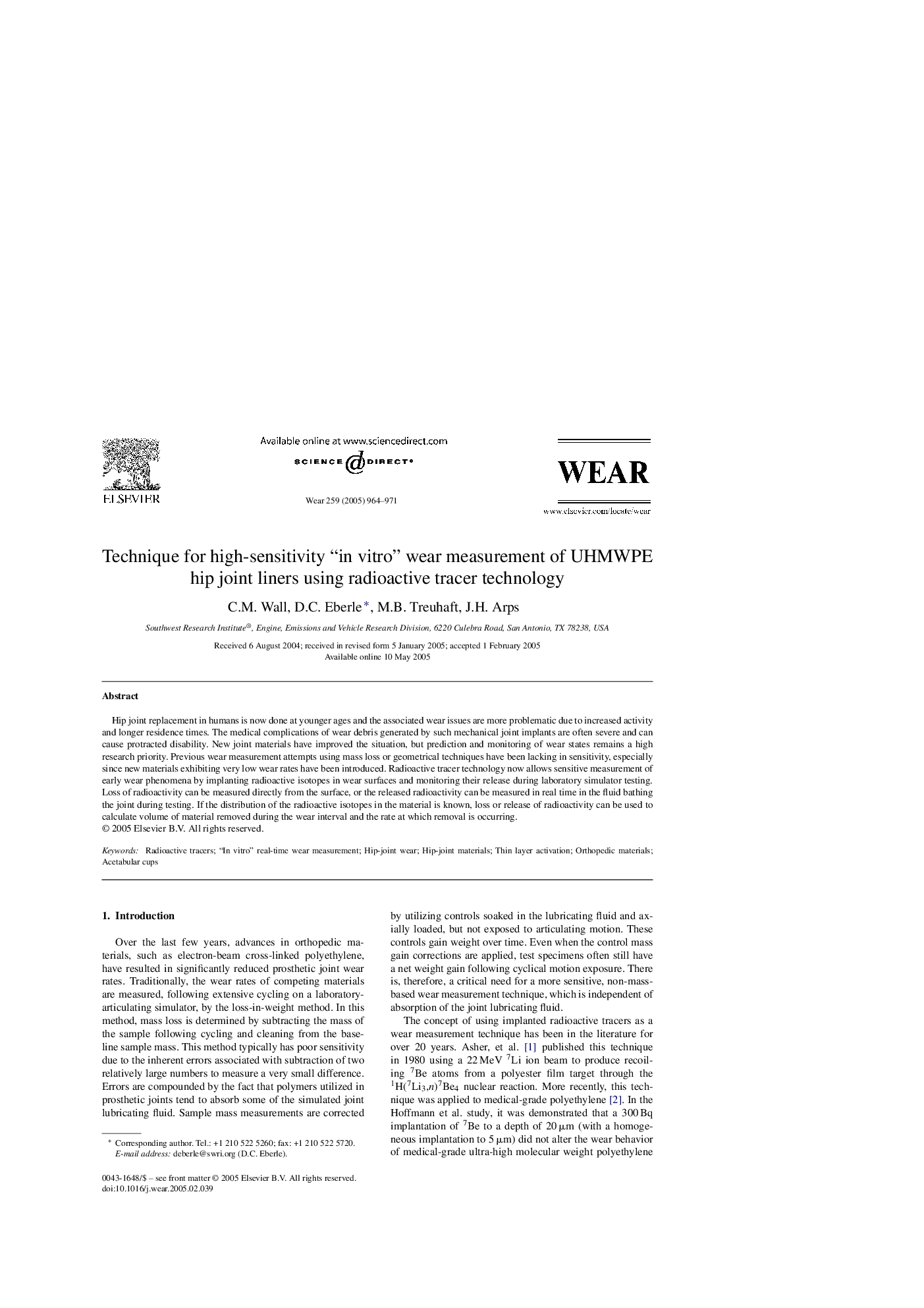| Article ID | Journal | Published Year | Pages | File Type |
|---|---|---|---|---|
| 9679313 | Wear | 2005 | 8 Pages |
Abstract
Hip joint replacement in humans is now done at younger ages and the associated wear issues are more problematic due to increased activity and longer residence times. The medical complications of wear debris generated by such mechanical joint implants are often severe and can cause protracted disability. New joint materials have improved the situation, but prediction and monitoring of wear states remains a high research priority. Previous wear measurement attempts using mass loss or geometrical techniques have been lacking in sensitivity, especially since new materials exhibiting very low wear rates have been introduced. Radioactive tracer technology now allows sensitive measurement of early wear phenomena by implanting radioactive isotopes in wear surfaces and monitoring their release during laboratory simulator testing. Loss of radioactivity can be measured directly from the surface, or the released radioactivity can be measured in real time in the fluid bathing the joint during testing. If the distribution of the radioactive isotopes in the material is known, loss or release of radioactivity can be used to calculate volume of material removed during the wear interval and the rate at which removal is occurring.
Related Topics
Physical Sciences and Engineering
Chemical Engineering
Colloid and Surface Chemistry
Authors
C.M. Wall, D.C. Eberle, M.B. Treuhaft, J.H. Arps,
